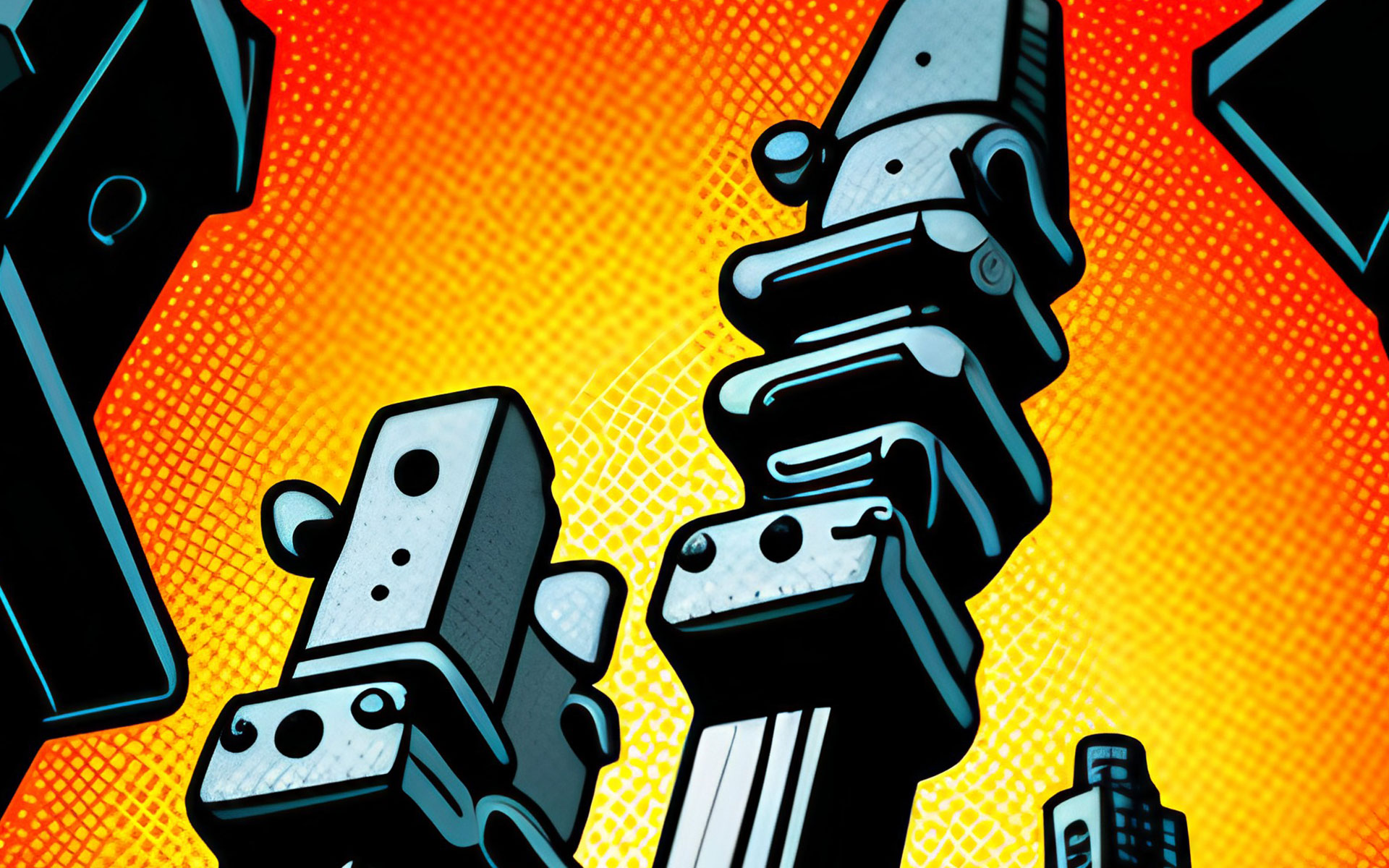Introduction
The Middle Ages were a time of great advancements in warfare and weaponry. Medieval weapons were used to defend and conquer, and for many years their power was unmatched. From longbows to crossbows, swords to battle axes, these weapons were essential to the success of any army. As technology advanced, so did the weapons, leading to more sophisticated and powerful tools of warfare. However, with the advent of gunpowder and firearms, medieval weapons began to decline in popularity. Despite their decline, these weapons will forever be remembered as a symbol of power and strength.
Types of Medieval Weapons and their Use in Warfare
The Middle Ages saw a wide array of weapons used in warfare, from the longbow to the trebuchet. During this period, advancements in weapon technology and tactics were made, and weapons such as the crossbow, mace, and flail became popular. As the Medieval period progressed, the use of these weapons in battle became more widespread and effective.
However, with the rise of gunpowder and firearms in the late Middle Ages, the use of traditional medieval weapons began to decline. Gunpowder weapons allowed for greater accuracy and range, and the use of older weapons became less effective in battle. As a result, the use of medieval weapons in warfare gradually diminished, and the era of gunpowder warfare was ushered in.
Key Advancements in Medieval Weaponry
The Medieval period was a time of great change and advancement in warfare. One of the most significant of these advancements was the introduction of new weapons and tactics. Medieval weapons were more sophisticated than those used in earlier eras, and allowed for more effective and efficient warfare. The use of crossbows, longbows, and siege engines, for example, allowed for more powerful attacks and better defense against enemies. In addition, the development of gunpowder and cannons made warfare even more destructive.
However, as technology advanced, so too did the decline of medieval weapons. Advances in technology, such as muskets and bayonets, rendered the weapons of the Middle Ages obsolete. The introduction of gunpowder and cannons also made traditional medieval weapons, such as longbows and crossbows, less effective. As a result, the effectiveness of medieval weapons was drastically reduced, leading to their eventual decline.
Weaponry and Tactics during the Medieval Period
The medieval period was a time of great advancement and decline in weaponry and tactics used in warfare. Medieval weapons ranged from the simple bow and arrow to more complex designs such as the crossbow and trebuchet. These weapons were often used to great effect in battles, such as the Battle of Hastings in 1066, where William the Conqueror used a combination of infantry and cavalry to defeat the Saxons.
As warfare evolved, so did the weapons and tactics used by medieval armies. Advancements in metallurgy allowed for the creation of more powerful and deadly weapons, such as swords and lances. The introduction of siege engines, such as the trebuchet, also allowed for the destruction of fortifications and the capture of cities. However, as the medieval period drew to a close, these weapons and tactics began to decline in effectiveness. With the introduction of gunpowder, the medieval weapons were no longer able to compete with the newer, more powerful weapons of the modern age.
The Decline of Medieval Weapons in Warfare
The medieval era was a time of great advancement in weaponry and warfare. Medieval weapons such as swords, spears, and bows and arrows were used to great effect on battlefields across Europe. However, as time went on, these weapons began to decline in their effectiveness. With the advent of gunpowder and firearms, medieval weapons were no longer as effective in warfare. The introduction of cannons, muskets, and other firearms allowed for greater accuracy and range in battle, making medieval weapons obsolete. Although these weapons are no longer used in warfare, they remain a fascinating part of our history and continue to be studied and appreciated by many.
Conclusion
The medieval era was a time of great advances in warfare and weaponry, with new and improved weapons being developed and used in battle. From the crossbow to the longbow, the medieval soldier had a variety of weapons to choose from. However, as the era progressed, the development of these weapons declined and eventually the medieval weapons were replaced by more modern and advanced weapons. The medieval weapons may have been the weapons of choice for the soldiers of the time, but they eventually gave way to more advanced weapons that allowed for greater accuracy and range. Although the medieval weapons may have been the weapons of choice for the time, they are now mostly forgotten, and their legacy has been replaced by the more advanced weapons of today.
The Medieval Period was a time of great advancement in weaponry and tactics, allowing armies to become more powerful and effective than ever before. From the use of crossbows, longbows, and siege engines to the development of the shield wall, medieval weapons and tactics had a significant impact on warfare. However, the rise of gunpowder and the development of firearms led to the eventual decline of medieval weapons in warfare. Despite this, the innovations and advancements of medieval weaponry still remain an important part of military history today. The Medieval Period was a time of great progress and discovery, and the weapons and tactics developed during this era continue to have a lasting influence on modern warfare.
The Medieval Period was a time of great advancement in weaponry and tactics, allowing armies to become more powerful and effective than ever before. From the use of crossbows, longbows, and siege engines to the development of the shield wall, medieval weapons and tactics had a significant impact on warfare. However, the rise of gunpowder and the development of firearms led to the eventual decline of medieval weapons in warfare. Despite this, the innovations and advancements of medieval weaponry still remain an important part of military history today. The Medieval Period was a time of great progress and discovery, and the weapons and tactics developed during this era continue to have a lasting influence on modern warfare.
The Medieval Period was a time of great advancement in weaponry and tactics, allowing armies to become more powerful and effective than ever before. From the use of crossbows, longbows, and siege engines to the development of the shield wall, medieval weapons and tactics had a significant impact on warfare. However, the rise of gunpowder and the development of firearms led to the eventual decline of medieval weapons in warfare. Despite this, the innovations and advancements of medieval weaponry still remain an important part of military history today. The Medieval Period was a time of great progress and discovery, and the weapons and tactics developed during this era continue to have a lasting influence on modern warfare.
Medieval weapon advancements had a significant impact on warfare during this period. New weapons such as the crossbow allowed for greater accuracy and range, while the introduction of gunpowder revolutionized the way battles were fought.
Medieval armies used a variety of weapons and tactics in battle. Knights typically used swords, lances, and maces in combat, while archers employed bows and arrows. Infantry used spears, pikes, and halberds. Tactics such as the shield wall and feigned retreats were also employed.
Siege weapons such as catapults and trebuchets played a major role in Medieval warfare. These weapons were used to break down castle walls and other fortifications, allowing armies to gain access to otherwise inaccessible areas.
The introduction of gunpowder had a major impact on Medieval warfare. Guns and cannons allowed for greater accuracy and range, while also providing a psychological advantage to the user. Gunpowder was also used in the form of explosives, which were used to breach castle walls and other fortifications.












